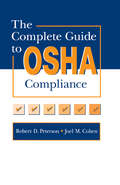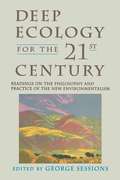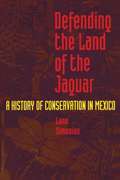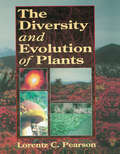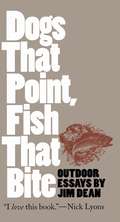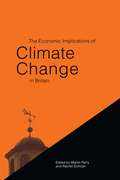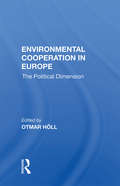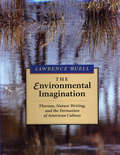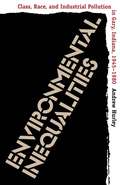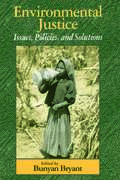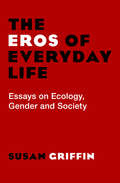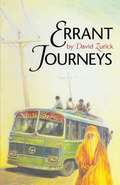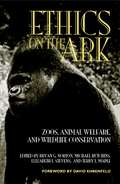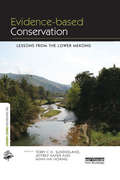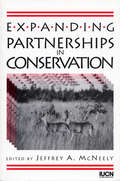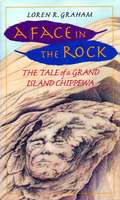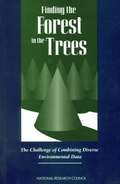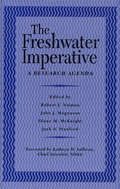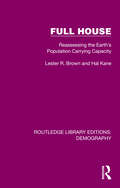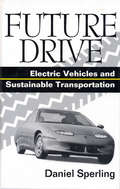- Table View
- List View
The Complete Guide to OSHA Compliance
by Joel M. Cohen Robert D. PetersonThe Complete Guide to OSHA Compliance is an easy-to-understand, one-stop resource designed to help safety professionals, industrial hygienists, and human resources personnel ensure compliance with existing and upcoming OSHA regulations. This essential book explains employer and employee rights and responsibilities, and it provides everything you need to know about employer standards and standards for specific operations. The Complete Guide to OSHA Compliance describes the process of injury/illness recordkeeping and the reporting system required by OSHA. It also explains how to conduct a self-audit to determine whether a company is in full compliance. Furthermore, it informs companies of their rights in an inspection and explains how to handle citations and appeals, should they arise.
Cool Off
by Nellie DiazA group of children in a city neighborhood try all sorts of ways to cool off on a hot summer day.
Creepy Sleepaway
by Nancy ButcherWhen Hector disappears shortly after his arrival in the Catskill Mountains, his camp counselor believes that everyone is just playing a joke, and the gang enlists the help of the Ghostwriter to stop a kidnapper.
Deep Ecology for the 21st Century
by George SessionsEvery day, in newspapers and on television, we read and hear about the ongoing destruction of the environment: the greenhouse effect, ozone layer depletion, deforestation, and air and water pollution. Deep Ecology offers a solution to the environmental crisis through a radical shift in human consciousness, a fundamental change in the way people relate with the environment. Instead of thinking of nature as a resource to be used for human needs, Deep Ecology argues that the true value of nature is intrinsic and independent of its utility. Emerging in the 1980s as an influential philosophical, social, and political movement, Deep Ecology has shaped the environmental debate among leading activists and policymakers-from former Vice-President Al Gore to Dave Forman, cofounder of Earth First! Deep Ecology for the Twenty-First Century contains thirty-nine articles by the leading writers and thinkers in the filed, offering a comprehensive array of perspectives on this new approach to environmentalism, exploring: The basic philosophy of Deep Ecology. Its roots in the writings of Henry David Thoreau, John Muir and Rachel Carson. The relationship of Deep Ecology to social ecology, ecofeminism, the Greens, and New Age futurism. How Deep Ecology as a way of life is exemplified by two important environmentalists: poet Gary Snyder and Norwegian philosopher Arne Naess. The philosophical dimensions of this environmental movement by its leading theorist. The politics of ecological sustainability and the social and political implications of Deep Ecology for the next century.
Defending the Land of the Jaguar
by Lane SimonianMexican conservationists have sometimes observed that it is difficult to find a country less interested in the conservation of its natural resources than is Mexico. Yet, despite a long history dedicated to the pursuit of development regardless of its environmental consequences, Mexico has an equally long, though much less developed and appreciated, tradition of environmental conservation. Lane Simonian here offers the first panoramic history of conservation in Mexico from pre-contact times to the current Mexican environmental movement. He explores the origins of conservation and environmental concerns in Mexico, the philosophies and endeavors of Mexican conservationists, and the enactment of important conservation laws and programs. This heretofore untold story, drawn from interviews with leading Mexican conservationists as well as archival research, will be important reading throughout the international community of activists, researchers, and concerned citizens interested in the intertwined issues of conservation and development.
The Diversity and Evolution of Plants
by Lorentz C. PearsonThis exciting new textbook examines the concepts of evolution as the underlying cause of the rich diversity of life on earth-and our danger of losing that rich diversity. Written as a college textbook, The Diversity and Evolution of Plants introduces the great variety of life during past ages, manifested by the fossil record, using a new natural classification system. It begins in the Proterozoic Era, when bacteria and bluegreen algae first appeared, and continues through the explosions of new marine forms in the Helikian and Hadrynian Periods, land plants in the Devonian, and flowering plants in the Cretaceous. Following an introduction, the three subkingdoms of plants are discussed. Each chapter covers one of the eleven divisions of plants and begins with an interesting vignette of a plant typical of that division. A section on each of the classes within the division follows. Each section describes where the groups of plants are found and their distinguishing features. Discussions in each section include phylogeny and classification, general morphology, and physiology, ecological significance, economic uses, and potential for research. Suggested readings and student exercises are found at the end of each chapter.
Dogs That Point, Fish That Bite
by Jim DeanJim Dean, longtime editor of Wildlife in North Carolina, offers his personal observations on the pleasures and frustrations of hunting, fishing, camping, and other outdoor pursuits. Dogs That Point, Fish That Bite draws together fifty of the best columns that Dean has written for the magazine over the last seventeen years. The witty, sometimes poignant pieces are arranged into a loose chronicle of the sporting year, with a generous allowance for digression: the first is set in April, on the opening day of trout season, and the last tells of a New Year's Day spent alone in a mountain cabin. At first glance, hunting and fishing are the focus of most of the columns. Often, however, Dean is after bigger game. A crab that escapes the pot leads him to reflect on the capricious nature of life. The restoration of a cabin at the old family farm evokes memories of family and simpler times. And a May panfishing trip takes on the quality of ritual, performed by two old friends. The consistent theme uniting all the essays is the celebration of wild places and rural traditions that have become endangered in our modern world."Earthy, intimate, brilliant, and always wise, these outdoor essays spring from the heart and mind of a replete hunter and fisherman. Jim Dean is among the top few writer-sportsmen in America--and I love this book.--Nick Lyons, author of Confessions of a Fly-Fishing Addict "Jim Dean brings you his outdoors with long experience, pleasant sentiment and unforgettable wry humor. His hunting, fishing and camping life may have centered in his beloved North Carolina but his pilgrimages to other fields and waters have spiced his stories with memorable comparisons. His book will last.--Charles F. Waterman, author of Black Bass and the Fly Rod Jim Dean, longtime editor of Wildlife in North Carolina, shares his personal observations on the pleasures and frustrations of hunting, fishing, camping, and other outdoor pursuits in this gem of a book. Dogs That Point, Fish That Bite draws together fifty of Dean's best essays, arranged into a loose chronicle of the sporting year--from the opening day of trout season to a New Year's Day spent alone in a mountain cabin. A witty and sometimes poignant collection, it celebrates the wild places and rural traditions that have become endangered in our modern world.-->
The Economic Implications of Climate Change in Britain
by Martin ParryClimate change could have a substantial economic impact, particularly on coastal states where seas level rises will be felt most strongly. Among these, the British Isles are likely to be significantly affected, and they provide an excellent case study of the consequences for specific sectors of the economy. In this book, leading experts - including several authors of reports by the Intergovernmental Panel on Climate Change and the UK Climate Change Impacts Review Group - examine the background and alternative scenarios for change, as well as its implications. They look in detail at water supply and management, agriculture and land use, energy, and the finance and insurance sector. In each case, they show how current activities will have to adapt and they conclude by evaluating the arguments for prevention now vs adaptation later. The changes in store could be huge, requiring the attention of academics and professionals from a wide range of disciplines and industries, as well as government action. This book makes a major contribution to understanding what is at stake.
Ecopsychology: Restoring the Earth, Healing the Mind
by Theodore Roszak Mary E. Gomes Allen D. Kanner"A breakthrough book. It makes crystal clear that the natural world is not just an `environment' around us, but it is us, existing inside our souls and minds."--Jerry Mander "A very exciting book of enormous interest for everyone concerned with the future of our species--environmentalists and legislators, industrialists and educators, you and me. Its message should become part of Western thought."--Jane Goodall --This text refers to the Paperback edition.
Edwin And Emily
by Suzanne WilliamsEdwin decides that his younger sister Emily is a pest, but sometimes she's a nice pest.
Environmental Cooperation In Europe: The Political Dimension
by Otmar HöllThis book aims to take stock of the state of environmental degradation in Europe from theoretical and empirical point of views. It focuses on international organizations and institutions in Europe that deal with ecological problems and integrates case studies on regional environmental cooperation.
The Environmental Imagination: Thoreau, Nature Writing and the Formation of American Culture
by Lawrence BuellThe author provides a major new understanding of Thoreau's achievement and, at the same time, a profound rethinking of our literary and cultural reflections on nature.
Environmental Inequalities
by Andrew HurleyBy examining environmental change through the lens of conflicting social agendas, Andrew Hurley uncovers the historical roots of environmental inequality in contemporary urban America. Hurley's study focuses on the steel mill community of Gary, Indiana, a city that was sacrificed, like a thousand other American places, to industrial priorities in the decades following World War II. Although this period witnessed the emergence of a powerful environmental crusade and a resilient quest for equality and social justice among blue-collar workers and African Americans, such efforts often conflicted with the needs of industry. To secure their own interests, manufacturers and affluent white suburbanites exploited divisions of race and class, and the poor frequently found themselves trapped in deteriorating neighborhoods and exposed to dangerous levels of industrial pollution. In telling the story of Gary, Hurley reveals liberal capitalism's difficulties in reconciling concerns about social justice and quality of life with the imperatives of economic growth. He also shows that the power to mold the urban landscape was intertwined with the ability to govern social relations.
Environmental Justice: Issues, Policies, and Solutions
by Jamal Kadri Robert Wolcott William Drayton Deeohn Ferris Roger Bezdek Kelly AlleyIn Environmental Justice, leading thinkers of the environmental justice movement take a direct look at the failure of "top down" public policy to effectively deal with issues of environmental equity.The book provides a startling look at pressing social and environmental problems and charts a course for future action. Among the topics considered are: the history of the social justice movement the role of the professional in working with community groups methods of dealing with environmental problems at the international level participatory national policy for environmental education, energy, industrial development, and housing and sustainable development.Contributors include Robert Bullard, Deeohn Ferris, Tom B.K. Goldtooth, David Hahn-Baker, Beverly Wright, Ivette Perfecto, Patrick West, and others.
The Eros of Everyday Life: Essays on Ecology, Gender and Society
by Susan GriffinA brilliant collection of thought-provoking essays on gender, nature, passion, and society from an acclaimed feminist, philosopher, and poet In The Eros of Everyday Life, one of America's most provocative writers and thinkers offers insightful and compelling views on a wide range of social, ecological, and gender issues. From a distinctly feminist point of view, Susan Griffin explores the intricate connections between science and religion, nature and society, women and men, and love and consciousness. She brilliantly commingles lyrical memoir with cogent social commentary, producing a colorful literary tapestry that examines contemporary life and culture, its contradictions and complexities, and the rise of new ideologies. The Eros of Everyday Life showcases a decade's worth of the very best writing by this acclaimed Pulitzer Prize and National Book Critics Circle Award finalist. It is an enthralling anthology that reveals the ways in which Western society undermines itself by diminishing both woman and the natural environment, and yet it is also a celebration of the power of passion, and the remarkable evolution of the human capacity for love.
Errant Journeys: Adventure Travel in a Modern Age
by David ZurickIn this pathfinding book, David Zurick explores the fastest-growing segment of the travel industry--adventure travel. He raises important questions about what constitutes the travel experience and shows how the modern adventure industry has commercialized the very notion of adventure by packaging it as tours.
The Essential Outdoor Gear Manual: Equipment Care and Repair for Outdoorspeople
by Annie GetchellThis book covers repairs on the trail or at home. Techniques range from patching a rain jacket to patching a canoe, fixing broken zipper slides to reweaving snowshoe webbing, cleaning campstove jets to filing ice axe teeth. Getchell augments her concise hands-on instructions with numerous anecdotes from outdoor experts, creating a rich, captivating blend of field-based, real-world knowledge guidance. This comprehensive, multisport reference covers climbing hardware, tents, sleeping bags, hiking boots, binoculars, to name a few. The emphasis is as much on care as repair, since more of the former means less of the latter. Appendices offer trail-tested repair kits for specific activities, knots stitches, adhesives, nontoxic cleaning solutions.
Ethics on the Ark: Zoos, Animal Welfare, and Wildlife Conservation
by Terry Maple Elizabeth Stevens Michael Hutchins Bryan G. NortonEthics on the Ark presents a passionate, multivocal discussion--among zoo professionals, activists, conservation biologists, and philosophers--about the future of zoos and aquariums, the treatment of animals in captivity, and the question of whether the individual, the species, or the ecosystem is the most important focus in conservation efforts. Contributors represent all sides of the issues. Moving from the fundamental to the practical, from biodiversity to population regulation, from animal research to captive breeding, Ethics on the Ark represents an important gathering of the many fervent and contentious viewpoints shaping the wildlife conservation debate.From the Trade Paperback edition.
Evidence-based Conservation: Lessons from the Lower Mekong (The Earthscan Forest Library)
by Terry C.H. Sunderland Jeffrey Sayer Minh-Ha HoangThere is a considerable gap between the science of conservation biology and the design and execution of biodiversity conservation projects in the field. Science is often failing to inform the practice of conservation, which remains largely experience-based. The main reason is the poor accessibility of evidence on the effectiveness of different interventions. This is the basis for this book adopting an 'evidence-based approach', modelled on the systematic reviews used in health sciences and now being applied to many policy arenas. Evidence-based Conservation brings together a series of case studies, written by field practitioners, that provides the evidence-base for evaluating how effective conservation and poverty alleviation strategies can be better implemented. A series of systematic reviews uses experiences and data from fifteen integrated conservation and development projects conducted in the Lower Mekong region, specifically in Vietnam, Laos and Cambodia. They provide wide-ranging overviews of the effectiveness of protected areas and how innovative tools and methods for monitoring and evaluation can be utilised for more effective outcomes. Results are in the form of management and policy recommendations, based on the quality of evidence and the cost-utility of the intervention. By bridging the gap between field practice and conservation, the analysis should lead to more effective integrated conservation and development interventions. The book represents one of the first attempts to apply the evidence-based approach to conservation and development.
Expanding Partnerships in Conservation: Science, Trends, And The Challenge Of Sustainability
by Jeffrey A. McneelyProtected areas around the globe national parks, wildlife reserves, biosphere reserves will prosper only if they are supported by the public, the private sector, and the full range of government agencies. Yet such support is unlikely unless society appreciates the importance of protected areas to its own interest, and the protected areas are well-managed and contribute to the national welfare in a cost-effective way.A crucial foundation for success is full cooperation between individuals and institutions. Based on papers presented at the IVth World Congress on National Parks and Protected Areas, Expanding Partnerships in Conservation explores how new and stronger partnerships can be formed between managers of protected areas and other sectors of society. It describes a range of activities currently underway in many parts of the world that are intended to improve conservation efforts at the international, national, and local levels.
A Face in the Rock: The Tale Of A Grand Island Chippewa
by Loren R. Graham Abigail RorerEight miles long and four miles wide, Grand Island lies off the south shore of Lake Superior. It was once home to a sizable community of Chippewa Indians who lived in harmony with the land and with each other. Their tragic demise began early in the nineteenth century when their fellow tribesmen from the mainland goaded them into waging war against rival Sioux. The war party was decimated; only one young brave, Powers of the Air, lived to tell the story that celebrated the heroism of his band and formed the basis of the legend that survives today. Distinguished historian Loren R. Graham has spent more than forty years researching and reconstructing the poignant tale of Powers of the Air and his people. A Face in the Rock is an artful melding of human history and natural history; it is a fascinating narrative of the intimate relation between place and people. Powers of the Air lived to witness the desecration of Grand Island by the fur and logging industries, the Christianization of the tribe, and the near total loss of the Chippewa language, history, and culture. Graham charts the plight of the Chippewa as white culture steadily encroaches, forcing the native people off the island and dispersing their community on the mainland. The story ends with happier events of the past two decades, including the protection of Grand Island within the National Forest system, and the resurgence of Chippewa culture.
Finding the Forest in the Trees: The Challenge of Combining Diverse Environmental Data
by Committee for a Pilot Study on Database InterfacesDuring the last few decades of the 20th century, the development of an array of technologies has made it possible to observe the Earth, collect large quantities of data related to components and processes of the Earth system, and store, analyze, and retrieve these data at will. Over the past ten years, in particular, the observational, computational, and communications technologies have enabled the scientific community to undertake a broad range of interdisciplinary environmental research and assessment programs. Sound practice in database management are required to deal with the problems of complexity in such programs and a great deal of attention and resources has been devoted to this area in recent years. However, little guidance has been provided on overcoming the barriers frequently encountered in the interfacing of disparate data sets. This book attempts to remedy that problem by providing analytical and functional guidelines to help researchers and technicians to better plan and implement their supporting data management activities.
The Freshwater Imperative: A Research Agenda
by Diane M. Mcknight Robert J. Naiman John J. Magnuson Jack A. Stanford Kathryn D. SullivanThis volume summarizes the two-year effort of a working group of leading aquatic scientists sponsored by NSF, EPA, NASA, TVA, and NOAA to identify research opportunities and frontiers in freshwater sciences for this decade and beyond. The research agenda outlined focuses on issues of water availability, aquatic ecosystem integrity, and human health and safety. It is a consensus document that has been endorsed by all of the major professional organizations involved with freshwater issues.
Full House: Reassessing the Earth’s Population Carrying Capacity (Routledge Library Editions: Demography #2)
by Lester R. Brown Hal KaneOriginally published in 1995, after decades of steady growth, this book was written at a time when the world’s food supply was no longer keeping up with population increases. This book examines the causes of the imbalance in the food/population equation and suggests ways in which Malthusian checks can be countered. It calls for an international strategy to restore global security, and a budget to implement it, with a massive redirection of the world’s financial resources. On one side of the argument the authors advocate increased expenditure on family planning services, education, and women’s rights. On the other, they stress the environmental importance of reforestation and soil conservation schemes to halt the deterioration of the agricultural resource base.
Future Drive: Electric Vehicles And Sustainable Transportation
by Daniel Sperling A. F. Burke Patricia M. Davis Mark A. DelucchiIn Future Drive, Daniel Sperling addresses the adverse energy and environmental consequences of increased travel, and analyzes current initiatives to suggest strategies for creating a more environmentally benign system of transportation. Groundbreaking proposals are constructed around the idea of electric propulsion as the key to a sustainable transportation and energy system. Other essential elements include the ideas that: *improving technology holds more promise than large-scale behavior modification *technology initiatives must be matched with regulatory and policy initiatives *government intervention should be flexible and incentive-based, but should also embrace selective technology-forcing measures *more diversity and experimentation is needed with regard to vehicles and energy technologies Sperling evaluates past and current attempts to influence drivers and vehicle use, and articulates a clear and compelling vision of the future. He formulates a coherent and specific set of principles, strategies, and policies for redirecting the United States and other countries onto a new sustainable pathway.
